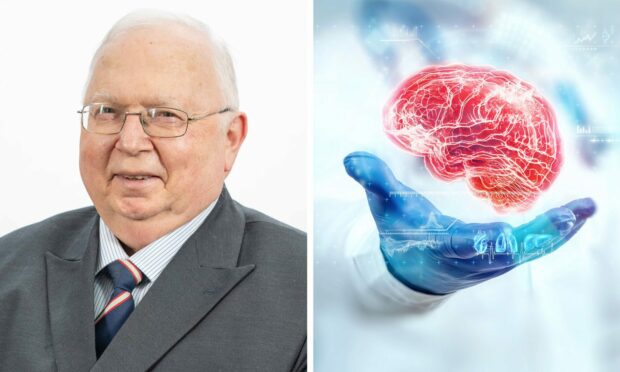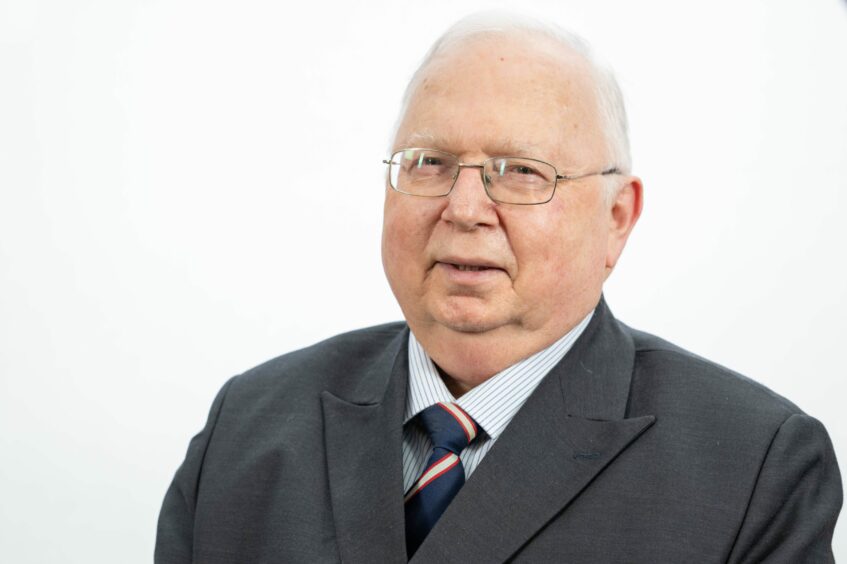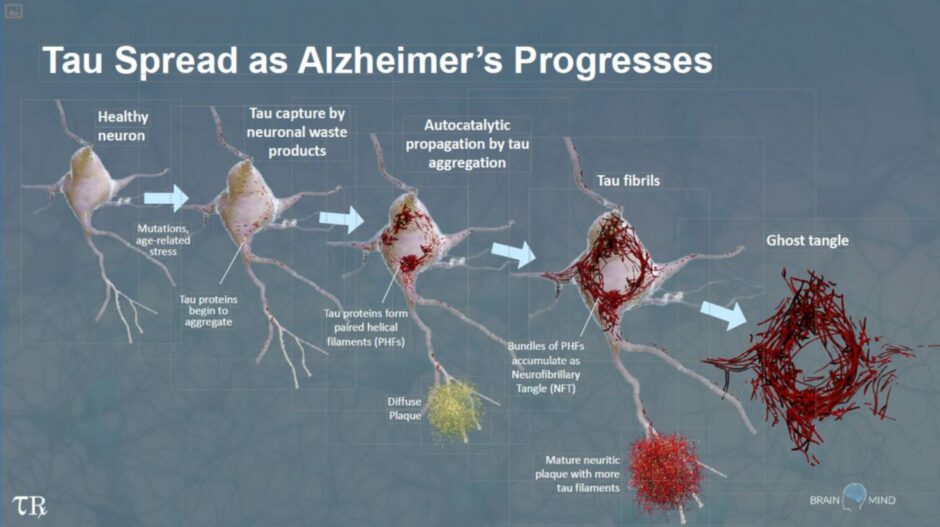Professor Claude Wischik has a ready answer to why his Aberdeen-based Alzheimer’s drug company TauRx has been such a success.
“The diagnostic terminology is already well worked-out in the in the north-east, and that is the word ‘dottled’,” the professor says with a hint of a smile.
“The north-east in its wisdom has known about all this for some time.”
He has, of course, a slightly more serious answer as to why TauRx is booming.
Two, actually.
One is that Aberdeen has quietly set itself up a vibrant and world-class life science sector, the branch of science that includes the study of brain function and, in turn, Alzheimer’s and dementia.
The second is that TauRx has recently made significant breakthroughs in the global drug industry’s search for an Alzheimer’s treatment.
The wonder drug developed next to an Aberdeen bus depot
Last June, the company, which works out of a building next to the First Bus depo on Aberdeen’s King Street, started fast-tracking a drug after trials showed it can slow the progress of Alzheimer’s.
TauRx hailed the new drug as a significant innovation for a disease that has not seen any new treatments come to market for decades.
But that was last year. Now, in an industry in which progress is usually measured in years rather than months, TauRx has announced another remarkable development; if the drug is taken at an early enough stage, then studies show brain function actually improves.
This is true for patients after six months of taking the drug all the way up to 18 months, with TauRx estimating that the improvement will continue for as long as two years.
“[Brain functions] are significantly better, like statistically significantly better than they were when they came into the trial,” Claude says. “It is remarkable, really.”
The cell function boost came as something of a surprise to Claude and the team at TauRx.
The studies were to confirm earlier data that the drug delayed brain degeneration, however the most recent findings have further energised efforts to gain regulatory approval and reach the market, something Claude says could happen in the UK within one to two years.
“Hopefully, within not too long a time period, we have something that will help everyone,” says Sonya Miller, head of medical affairs at TauRx.
Why TauRx drug works best on Alzheimer’s if used early
Sonya does jump in with a couple of qualifications.
As TauRx’s medical oversight lead it is her job to make sure the drug does everything it claims to.
Naturally, she is keen to keep feet firmly on the floor when it comes to wonder breakthroughs.
She clarifies that the key to the brain boosting studies is that they were carried out on early-stage Alzheimer’s.
The earlier the treatment is started the better because it slows or effectively halts degeneration.
This means that Claude and Sonya are firmly behind any efforts to detect Alzheimer’s as soon as possible.
“We were not going to fix this problem alone,” Sonya says. “We need the entire industry and government to be working in the same direction.”
Why TauRx is not like the ‘Limitless’ drug
Meanwhile, Sonya is also keen to temper any hopes that because TauRx has been shown in early research to boost brain function the company has on its hands a drug like the one in the 2011 movie ‘Limitless’.
That movie depicts a wonder drug that unlocks the full potential of the brain, allowing Bradley Cooper to learn foreign languages in mere hours and become a stock market whizz.
“It’s a classic patient thing, to think that if it helps people who have less, then if I’ve got enough, it’ll help me get more,” Sonya says. “But it doesn’t work that way.”
She likens it to vitamins – they only useful if the body has a deficiency in the first place. People that already have enough vitamins don’t need to take supplements.
And if they did, nothing would happen.
“The body’s an amazing thing,” she continues. “If you have enough of your neurotransmitters you’re functioning well, you’re okay. This is helping people who have already served to show this deficiency. That’s a critical difference.”
‘We’re aware of the potential’
None of this means the team at TauRx are not excited about the possibilities of their treatment.
They are, not least because the company that manages to bring an Alzheimer’s treatment to the market – one that like TauRx’s treats the disease rather than just the symptoms – will make an awful lot of money.
“We are aware of the market size,” says Sonya, “and we’re aware of the potential.”
But they are also proud that an Aberdeen company – one next to a First Bus depot, no less – is allowing people all over the world who are affected by Alzheimer’s to believe progress is being made in finding a solution.
“People will only come out of the shadows when there is hope for them,” Claude says. “And what we really believe is that our drug will offer hope to people, real hope.”
But will it offer a cure?
On that, TauRx is more circumspect.
“Everybody wants to know, can we cure Alzheimer’s disease?” Sonya says. “That may be a more difficult problem, because it’s a neurodegenerative disease.
“But prevention of disease all together through a combination of factors would be the holy grail for most of us working in this field.”




